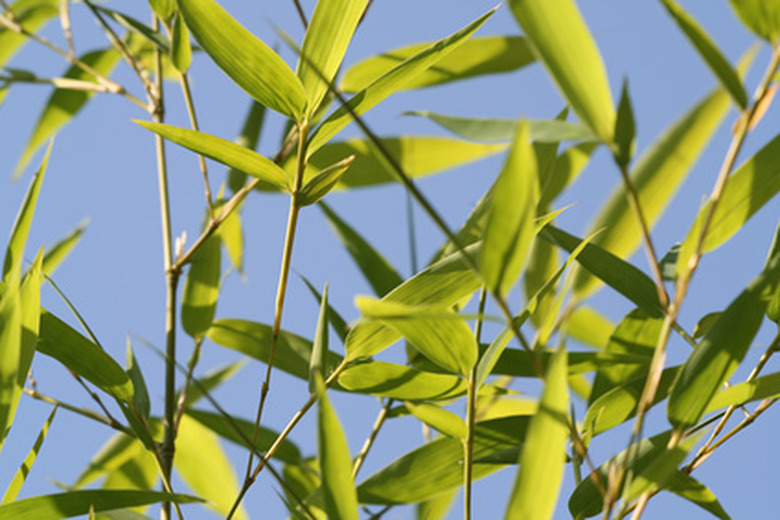Growing Bamboo In Idaho
Things Needed
- Shovel
- Hoe
- Rake
- Bamboo barrier
- Bamboo rhizomes
- Mulch
Bamboo are tall, woody grasses that generally grow under the protective cover of taller forests in their natural habitat. The mountains of Idaho create a wide variance in climate; USDA hardiness zones in the state range from 2 to 7. Most of the state, however, is in zones 4 to 6. Bamboo varieties that grow well in Idaho include Glaber Tsuboi, Kumazasa and Dwarf Greenstripe.
Step 1
Dig out the area for planting your bamboo in the spring after the risk of frost has passed. Dig down 3 feet if you're planting bamboo that reproduces with runners, usually referred to as "running" bamboo. Dig down 16 to 20 inches if planting clumping bamboo. As you dig out the soil, break up any large clumps with the hoe, and rake to make a smooth soil with clumps no larger than golf balls.
- Bamboo are tall, woody grasses that generally grow under the protective cover of taller forests in their natural habitat.
- Dig down 3 feet if you're planting bamboo that reproduces with runners, usually referred to as "running" bamboo.
Step 2
Remove the soil from the hole if planting running bamboo. If planting clumping bamboo, loosen the soil as you would for a vegetable garden, and remove the top 8 inches.
Step 3
Line the planting area with a bamboo barrier if planting running bamboo. Make sure the barrier extends 33 to 36 inches deep, and allow it to extend 2 to 3 inches above the soil. Do not line the bottom of the hole. If planting clumping bamboo, skip this step. Bamboo barriers are commerically available, but poured concrete, 60-mil polypropylene or fiberglass may be used as bamboo barriers.
- Remove the soil from the hole if planting running bamboo.
- If planting clumping bamboo, loosen the soil as you would for a vegetable garden, and remove the top 8 inches.
Step 4
Re-fill the hole to 8 inches below the level of the surrounding soil if planting running bamboo.
Step 5
Lay the bamboo with the eyes of the rhizomes face up, and backfill the hole. The eyes are the round formations on one side of the rhizome from which the bamboo will grow.
Step 6
Mulch the area with 1 or 2 inches of straw, leaves or other organic mulch. Mulch helps the soil retain water and reduces weeds.
Step 7
Give your new planting 2 to 4 inches of water. Keep the soil moist, but not drenched. Once the bamboo obtains 4 to 5 segments on the culms, or stems, begin watering when the top 1/4 inch of soil dries out.
- Re-fill the hole to 8 inches below the level of the surrounding soil if planting running bamboo.
- The eyes are the round formations on one side of the rhizome from which the bamboo will grow.
